Not much is written about HOW - TO successfully flip homes in Calgary. Most agents just point you to some cheap homes, and say, fix them, sell them for more. I think there has to be more to it. More science. More of a guide. More steps. So, I set out to start. This is what I do for my FLIP clients. Your agent might have other concepts, but this is what I consider advanced.
Here are my rules:
- buy in a good location
- ensure the home isn't on a major road and/or backs to major road.
- focus on the older areas. Think of the homes we grew up in or our grandparents owned. Typically large lots. Typically bungalows
- use area VALUE CHARTS to quickly identify which areas are possible to flip
- next, ensure that even if the value chart allows, ensure that the distribution of sales allows
- One of the biggest DESIGN elements is OPEN CONCEPT. Bungalows are well suited to becoming open concept, with only a roof load to worry about as we remove intervening walls (and not another level above and/or mechanical leading to that level)
- replace / re-finish most everything inside.
My first rule, "buy in a good location" along with focus on older areas is partially tied, and needs to be more highly nuanced. Let me explain what I think is a good FLIP location. Let's start with a map of the city:
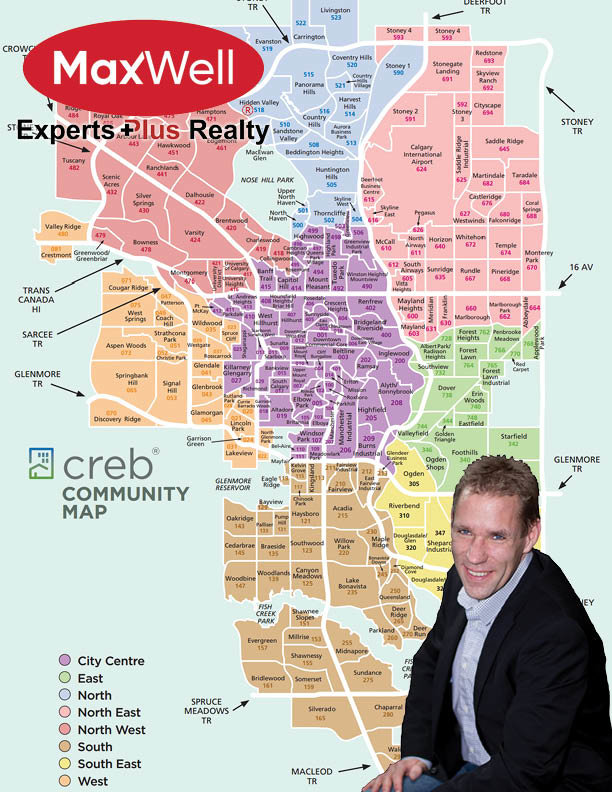
First, I acknowledge that it's almost impossible to flip in a newer area. The homes are too new, nothing is worn out yet, and nothing needs fixing. Worse, builders are often just a mile away, building BRAND NEW. Do you want to compete against the builders? I want to stay MILES away from new construction. This excludes MOST of Calgary (excuse the bad drawing, Calgary didn't grow into a nice "round" city).
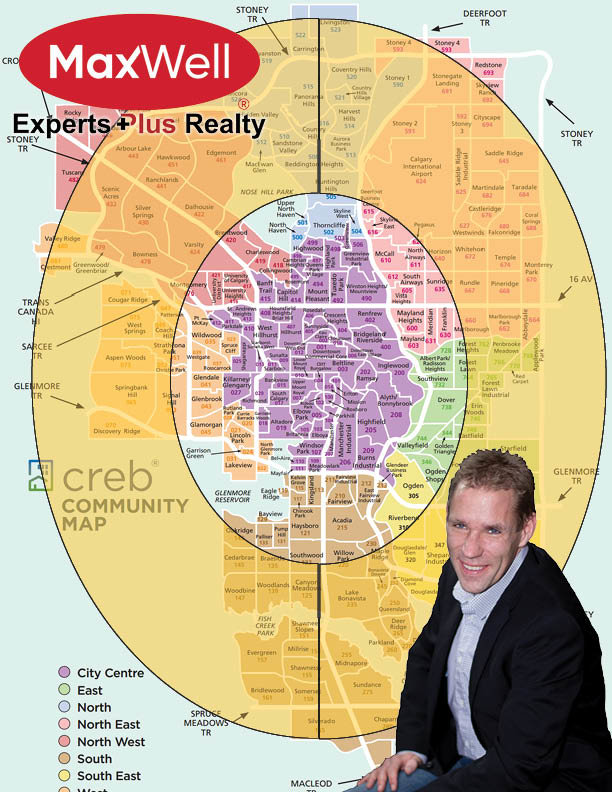
I also don't want to buy an old house in the REALLY old areas of Calgary. I'm thinking of the downtown. I'm thinking of areas where infills are happening. Where the city allows a developer to knock over 1 home and build a duplex. Or knock over 2 or 3, and put up an apartment building. So, now RED areas.
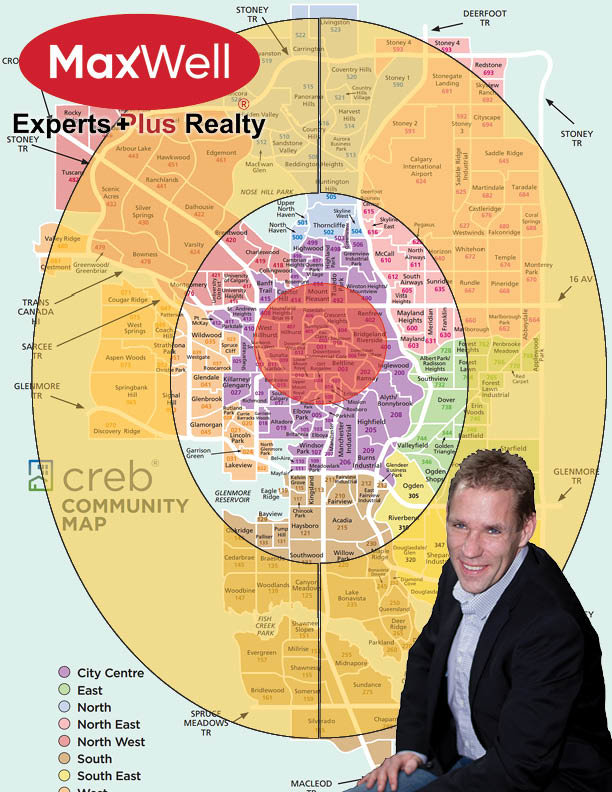
and lastly, I largely don't want the EAST 1/2 of Calgary. In general terms, the east 1/2 of Calgary isn't as well suited to flipping as the WEST 1/2 (there are exception, mostly along MacLeod Trail. This isn't exhaustive, more a big picture):
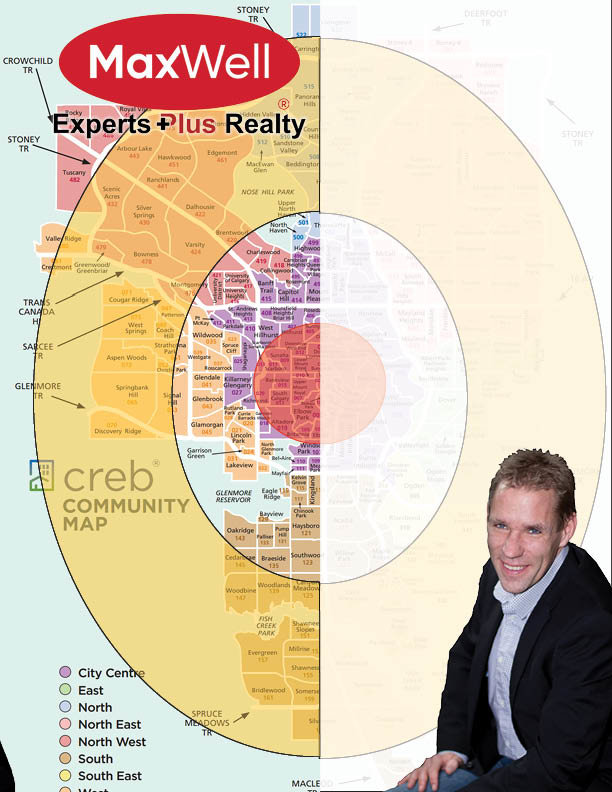
So, what we have left is essentially a "crescent" around the inner city. As a Flames fan, I like to think of it as a flaming C around the Saddledome.
Second, I need to dispel a common belief that the BIGGER the home, the more it's worth. And, while it's true in many NEWER areas, it's not true in older areas. Let me introduce the concept of a value chart.
Essentially, if we plot every home in an area, we can draw a line and predict value. The larger the home, the higher the selling price. In areas that are relatively new (new to 2 decades old), this largely holds. Witness Tuscany:
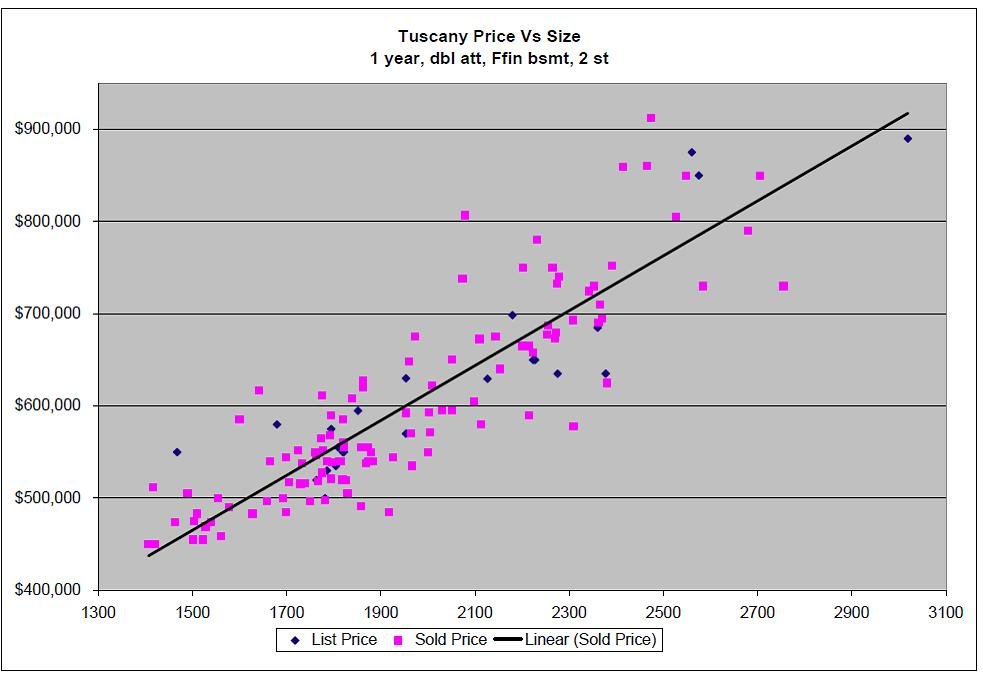
If you want to geek out, I've gotten 80 R2 scores in some areas. This can be HIGHLY predictive. But in older areas, it tends to fall apart. Take a look at this unnamed inner city community:
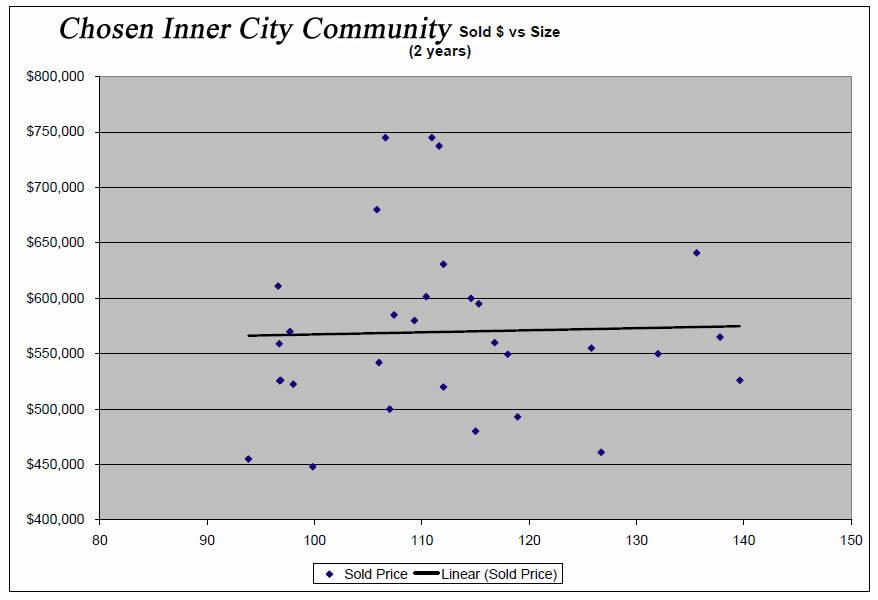
there is almost no relation between size and square footage. So what is driving price? How do you value a home? ANSWER: how well has the home been upgraded / maintained over the preceding 30, 40, 50 or 60 years?
Now that we've identified some areas that aren't too OLD (downtown, infill), nor too NEW, nor EAST, and that the VALUE CHARTS indicate is possible, what's next?
Now, we have to consider is how many homes sell in each price range. CREB Stats can be used here, although it's still best to ask your agent to generate something that is better for you. As an example, here are the sales by price range in Cambrian, as supplied by CREB (and unfortunately, the only stats your agent ever does).
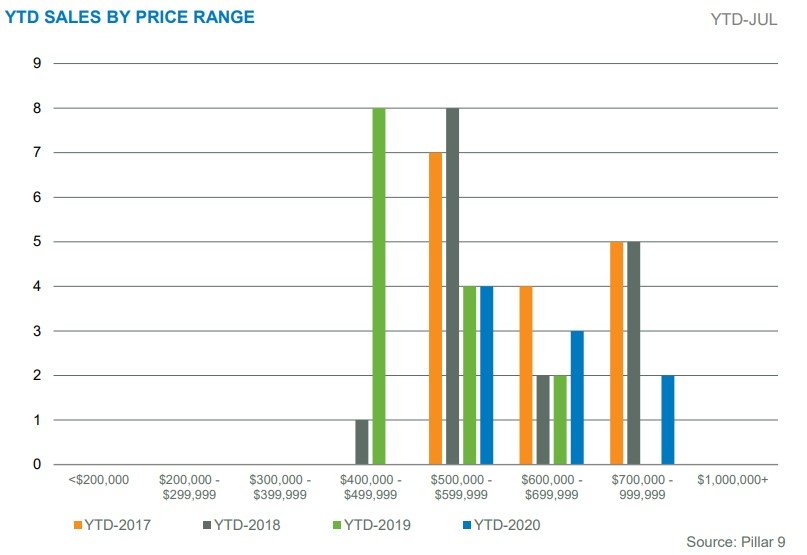
I see some issues with this chart.
- Looking at the community level, our sample sizes are SMALL. Looking at this year, or even the past year, often does give enough data. I pulled THREE years of data. I then adjusted the sales price using the BENCHMARK price.
- in many inner city areas, you'll have some infill development. Where someone has torn down an older home (or had nature / fire do it for them), and have rebuilt? How many of the chosen are "new"?
- was the development in the area all the same? All bungalows? All 2 storey? A mix? Other housing styles?
- When looking at flips, is $100 000 range adequate? Or should we know with a little more precision?
Here is the price per sale range, broken down, but with THREE YEARS of benchmark adjusted data, and more finely tuned to $50 000 increments instead of $100 000 (twice the "resolution"). I referred to this as "Price Gravity"; although it's possible to sell at $1 million, the farther you get away from everyone else, the tougher it is. Just like gravity.
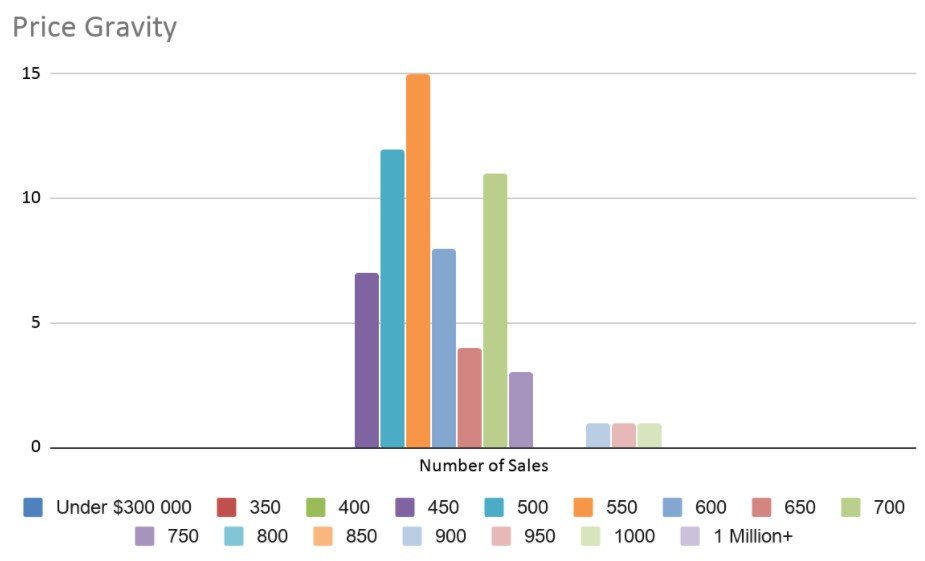
I then look at a chart to see some of the breakdown (bungalow vs 2 storey. I usually don't track 3 level splits or 1.5 storey, just the main couple, until we choose an area).
I'll often combine all of this into a single, easy to read sheet.
Finally, I then show to my clients what successful flips LOOK like. I did this by combing through literally thousands of inner city sales, finding those that sold TWICE (either flips or ended up moving quickly after buying), then sub-selecting those that sold for a minimum $100 000 difference. The map looks like this (I didn't choose every area):
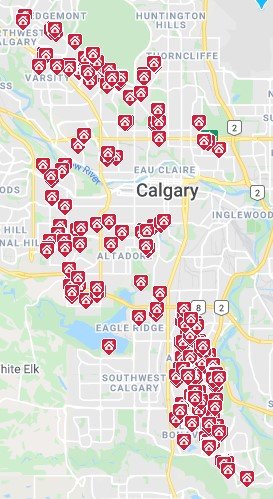
Now that we've selected the possible COMMUNITIES, selected the TYPE of home, do we even begin looking at potential homes.
Flipping is an ADVANCED real estate, combining not only skill in finding the right community / home (the above is almost a science), but also construction (including either DIY or managing contractors), and having an appreciation of POST flip sale price, to ensure profit. Ensure you have a capable agent.
Good luck and happy flipping.
Posted by Matthew Dekort on
Leave A Comment